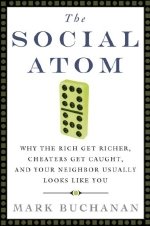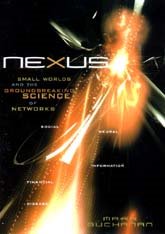We seem to be a rather polarized country. According to views often expressed in the media, especially online, Republicans revel in the idea of torture and detest our Constitution, while Democrats want to bring the troops home from Iraq only to accomplish the dastardly double-trick of surrendering our country to the terrorists and kicking off a genocide in the Middle East.
It’s odd then that recent polls actually show 60 percent of Americans wanting to see the troops come home from Iraq either immediately or within a year. Another poll has 90 percent of Democrats, 80 percent of independents, and 60 percent of Republicans agreeing that global warming is a serious problem and that we as a nation should be a global leader in doing something about it. Studies show that when it comes to issues ranging from health care to the death penalty, from immigration to Social Security, people in the so-called red and blue states hold remarkably similar views.
Still, the illusion of a nation divided persists, and one reason that it does may be oddly mechanical. It’s quite possible that the emergence of visibly polarized views in the media, especially on the Internet, may be an almost automatic result of the relatively simple rules by which opinions and attitudes propagate through human heads.
Before I explain, I’d like to bring up what might seem to be a separate issue, racial segregation.
In the early 1970s, it was taken for granted among American academics that persistent racial segregation was due mostly to racism. Studies had revealed widespread racial bias in hiring, promotion and pay, and real estate practices that worked to keep blacks out of white neighborhoods. But Thomas Schelling, an economist then at Harvard, suggested that another factor might also be at work.
Schelling supposed that many people, even those who are perfectly happy to live in an integrated neighborhood, might also prefer not to live in one where they were part of an extreme minority. You wouldn’t think this simple preference could have much influence, but it can. Moving coins representing people around on a grid of squares representing houses, Schelling showed that the simple preference not to live in an extreme minority should generally lead people to move about in such a way that a community ends up segregated into distinct, racially segregated enclaves.
No one would come to this counterintuitive insight by sitting in an armchair, philosopher-like, and thinking about it. Schelling found it by way of an experiment, in his case with coins and paper, though today researchers can demonstrate the same effect using computers. The important conclusion isn’t that racism is unimportant; there is no question that it is. The point is that segregation by itself doesn’t imply racism; segregation might well arise quite automatically, the races separating like oil and water. Racism is real, but so is the automatic segregation effect, and we should be aware of both.
What does this have to do with our polarized political world? Just after the 2004 election, a pair of mathematicians undertook a study of how blogs link to one another. Imagine all the blogs on the Web as points on a page, colored red or blue depending on their political slant. Now draw a line between any two if one of them links to the other. Doing this, Lada Adamic and Natalie Glance found that the red and blue bloggers belonged to strongly separated communities, within which there were many links between like-minded sites. In contrast, there were very few links connecting the red community to the blue. (The original paper has a nice diagram of the two communities, showing the links within and between them.)
This intellectual segregation of the like-minded into separate enclaves persists today. And it is almost certain that it can be explained by the operation of a process like Schelling’s.
People experience real psychological discomfort – psychologists call it “cognitive dissonance” – when confronted with views that contradict their own. They can avoid the discomfort by ignoring contradictory views, and this alone brings like-minded bloggers together.
Humans share another psychological habit too – a strong tendency to adopt, even if unconsciously, the attitudes of those with whom they interact. We even copy other people’s behavior patterns.
In experiments at the University of Amsterdam, psychologist Ap Dijksterhuis had two separate groups of volunteers talk with some actors who behaved as either professors (supposedly intelligent) or soccer hooligans (supposedly not so smart). Afterwards, when the subjects were asked to answer a series of general knowledge questions, the people who had been “primed” by interaction with the “professors” did significantly better than those primed by the “hooligans.”
If just being around people who act “smart” or “stupid” can make us act similarly, goodness knows what automatic influences percolate through the more extreme regions of the blogosphere.
Our largely unconscious psychological mechanisms appear to support a kind of mechanical feedback that cannot easily lead to anything but a pronounced segregation into polarized enclaves, with attitudes and opinions amplifying themselves and reverberating within the confines of two distinct halls of mirrors. None of which, obviously, is conducive to healthy public discourse, nor supportive of any kind of reasoned and balanced consideration of issues.
The trouble is that these forces operate outside of our view. Many people, not by choice but more or less automatically, filter reality in an emotional way that preserves and supports the groups to which they feel linked.
The good news is, we’re not all bloggers – yet. And the American public still shows a more balanced range of opinion, much of it squarely in the middle, than one would guess from looking at the polarized blogosphere.
Thursday, May 3, 2007
The illusion of a nation divided
Subscribe to:
Post Comments (Atom)




No comments:
Post a Comment